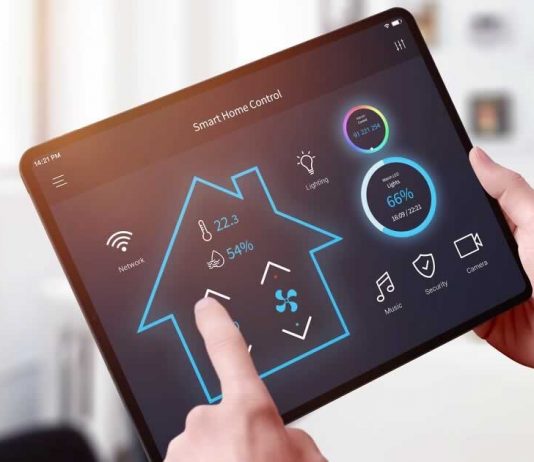What devices can I buy to make my own robotic domestic space without overpaying for the installation of a ready-made system?
A smart home is a comprehensive concept, and you can realize your idea with the help of various technical solutions.
Smart home systems are either wired or wireless. If you’re planning to build a private home, you might want to consider building a truly custom-wired system. It reduces the chance of errors related to dead batteries and ISP outages.
Such a robotic home can be very flexible, and the infrastructure can be completely invisible, hidden behind baseboards and electrical panels. The home plan you want needs to be designed in advance – at the stage of organizing the wiring. In addition, the cost of such embedded solutions is much higher than a set of equipment like an electric linear actuator by Progressive Automations witha simple design and easy application.
Embedded solutions are more related to construction work than to buying gadgets, so in most cases, ordinary users prefer to buy equipment that can be installed in an already finished apartment or house.
Before creating your own customized smart home system, you need to determine the purpose for which this solution is implemented. Typically, goals come down to the following options:
- Home security (from the penetration of thieves, gas and water leaks, fires, etc.);
- Saving resources (adjusting heating, powering electrical appliances);
- Climate control and regulation of environment parameters (for example, illumination, temperature, and air humidity);
- Convenience (controlling the color and brightness of lighting, curtains, multimedia devices, kitchen appliances in the absence of the owner of the house, etc.).
More often than not, tasks overlap in one way or another. The set of equipment that you need to buy and, accordingly, the scenarios for its use depend on the goals (for example, turning off all electrical appliances when the owner leaves the house, turning on the warm floor in the morning shortly before the household wakes up, starting the washing machine or pump at night).
General principles of organization
Regardless of the communication method, a smart home consists of the following elements:
- Controller (hub) – a control device that connects all elements of the system with each other and connects it with the outside world;
- Sensors (sensors) – devices that receive information about external conditions;
- Actuators are devices that execute commands. There are a lot of such devices, and their range is almost unlimited. These can be automatic sockets, smart kettles, pipe controllers, etc. Actuators are components that turn on/off, regulate pressure, and actuate all commands in practice.
Some solutions can combine a sensor, an actuator, and a controller at the same time – for example, a smart socket. In addition, there are cloud solutions: the role of the hub is performed by a program that runs in the cloud. Ready-made cloud solutions allow you not to go into the study of the technical implementation of a smart home system.
However, there is a non-illusory risk that in just a couple of years the manufacturer will no longer support the outdated cloud system – and it’s good if the smart home can be switched to a local mode of operation. In the worst case, gadgets will simply have to be thrown away. This is partly why the number of servers for local home automation has been on the rise lately. At the same time, all new devices can be connected to one hub, expanding the smart home according to the constructor principle.
Alas, there is no single standard for combining devices into a smart home system. Therefore, when buying equipment, you will either have to choose the ecosystem of a certain manufacturer or build a smart home using a router that supports several communication protocols at once.
The gadgets used in the smart home system most often support not only the usual Wi-Fi and Bluetooth communications but also the more exotic Z-wave and Zigbee protocols. The last two provide not very high-speed and powerful channels, but devices that use them can work for a year on one battery. Therefore, Wi-Fi and Bluetooth are often used in smart refrigerators and coffee makers, while the other two are used in leak sensors, smart curtain rods, etc.
The Ways Robotization Can Change Your Life
A robotic home ensures the coordinated operation of all electrical equipment. Externally, a cottage with an installed smart home system is not much different from an ordinary house. Nothing in the interior and exterior of the house betrays that it has a modern control system. From the outside, only beautiful switches are visible, as well as bright and colorful touch screens, located on the walls in convenient places, such as in the living room or in the kitchen. One touch on the screen and the lighting turns on smoothly, the curtains close, music starts playing, etc. Everything is now under control.


